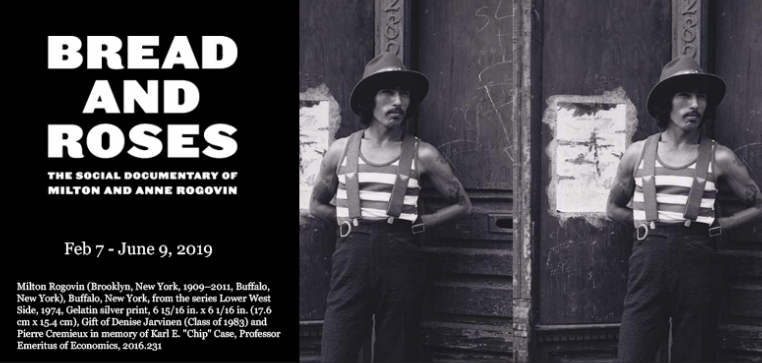
Robert and Claire Freedman Lober Viewing Alcove
In 1957, in the midst of the Cold War-era crackdown on the Communist Party and other “Un-American” activities, the optometrist, social activist, and self-taught photographer Milton Rogovin was labeled the “Top Red in Buffalo.” Ostracized and silenced by his local community, Rogovin turned to photography as a means of continuing his commitment to social equity, a commitment echoed by the political slogan, “Bread and Roses.” This exhibition explores how Milton, together with his wife Anne Rogovin, built on the legacy of documentary and concerned photography in the United States in subtle ways that expanded the potential of the medium to reach and affect audiences, as well as the sitters themselves – the workers of the world. By making use of the photographic series, conducting interviews and composing poetry to accompany their images, consistently establishing eye contact with their sitters, photographing people at their place of work and in their homes, revisiting the same families over decades, and never failing to give their sitters a copy of their photographs, Milton and Anne Rogovin used photography to learn about and reflect upon the human condition. In the process, they transformed the documentary genre from a practice that prompts sympathy to one that insists on the dignity of its subjects.
Curated by Carrie Cushman, the Linda Wyatt Gruber ‘66 Curatorial Fellow in Photography, the exhibition is generously supported by the The Mary Tebbetts Wolfe ‘54 Davis Museum Program Fund.